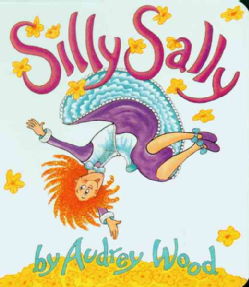Comprehension
Read the first seven pages of the book and ask yourself who and what is going on in the story so far. Model to the students how you ask yourself these questions as a reader. Retell the story (so far) in your own words. Tell the students that this strategy is the secret to success for reading. If you don’t have a clear understandingyou will need to go back and reread (Another comprehension strategy taught later with this book). Continue with this modeling every few pages.
Comprehension
Read a few pages of the book and model for the students how you check for understanding. In this case model for students that you are confused as you checked your understanding. Tell the students that a strategy they can use when they are confused in a story is to back up and reread. For example, read pages 16-21. Stop and check your understanding with the class. Ask yourself “why are Sally and all the animals sleeping?” Model how you are going to start again and reread the same pages to see if it helps clear up what you were confused about. After rereading, model how you ask yourself again what is going on (who and what?). Make it clear to students that now you understand why they are all sleeping; because Sally met a sheep and they fell asleep, that’s why everyone is now sleepingin the story. Continue modeling towards the end of the story.
Comprehension
This story is fun for kids to visualize because it is full of silly, funny things that Sally is doing. The teacher will read pages 6 and 7 to the class (pg. 6: On the way she met a dog, a silly dog, pg. 7: they played leapfrog.) without showing them the pictures. Have students visualize what is happening and ask them to make a picture in their head of what they see when those pages are read. Give students plenty of “wait time” so they can develop a clear picture in their heads before revealing the actual picture to them.
Fluency
This strategy is good for kids that either read too fast, or read too slow. (A common problem with young readers) Ask the students to listen to you read a few pages of the book and see if they can tell what you’re doing wrong as a reader. (Read the first 7 pages very fast.) Students will comment that you read too fast.
Now read the same pages again but this time read very slow. Ask the students what didn’t sound right. Now read the same page with the appropriate rate. Explain how reading at an appropriate rate helps make the reading enjoyable and easy to understand.
Expand Vocabulary
Possible words from this text: jig, leapfrog, loon, and tickled.
The teaching points for this lesson were written by April Gradoville.
* This page contains affiliate links. If you use these links to buy something we may earn a small commission.





